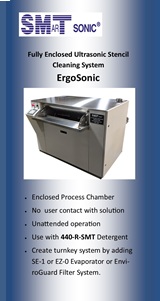|

|
|
| Ask the Experts | |||||||
|
|||||||
|
September 12, 2011 - Updated September 12, 2011 - Originally Posted DI Water Resistivity CheckIs there a simple test to check DI water resistivity? Something simple like those little test strips used to check the chlorine level in a swimming pool? J. C. |
|||||||
| Expert Panel Responses | |||||||
|
DI water has variables and in many Dl water applications you need to know the precise quality. Resistivity/conductivity is the most convenient method for testing Dl water quality. It is real simple and takes a piece of equipment that takes many of the variables into mind when checking. Deionized water is a poor electrical conductor, having a resistivity of 18.2 million ohm-cm (18.2 megohm) and conductivity of 0.055 microsiemens. It is the amount of ionized substances (or salts) dissolved in the water which determines water's ability to conduct electricity. Temperature affects the conductivity of water, conductivity measurements are at 25degC to allow for comparisons of different samples. With most water supplies, temperature changes the conductivity an average of 2%/degC, which is relatively easy to compensate. Deionized water, however, is much more dependent to accurately measure the temperature due to the effects can approach 10%/degC! Accurate automatic temperature compensation is very strongly suggested. You need to measure Dl water quality at points of use, circumvent any problems in a Dl system confirm monitor readings, and test the feed water to the system. The handheld instruments have been used for many years. A good versatile instruments for Dl water is the 4P or 6P Ultrameter II(TM), This low cost hand held unit can measure both ultrapure mixed bed quality water and unpurified water. It should be noted that once Dl water leaves the system, its resistivity will drop because the DI water absorbs carbon dioxide from the air.
President/CEO Electronic Technology Corporation Mr. Jeglum has 35+ years experience and is the founder of Electronic Technology Corporation. He is responsible for 22 years of program management for the Company.
A simple conductivity / resistivity probe is all that is needed to make the measurement, and that is about as simple as it gets. Since you are measuring ionic content (primarily salt) in the solution, it is possible that a "salt reactive" strip could be developed, but it probably would not have the accuracy to measure in the 10E-6 to 10E-8 range. An inexpensive probe is the easiest choice.
President Chem Logic Rick Perkins is a chemical engineer with more than 33 years of Materials & Processes experience. He has worked with Honeywell Aerospace in high-reliability manufacturing, as well as with several oil-field manufacturing companies. He also has a good understanding of environmental, health, and safety regulations.
|
|||||||
| Submit A Comment | |||||||
|
Comments are reviewed prior to posting. You must include your full name to have your comments posted. We will not post your email address. |
|
Free Newsletter Subscription
Circuitnet is built for professionals who bear the responsibility of looking ahead, imagining the future, and preparing for it. Insert Your Email Address |
|

|




